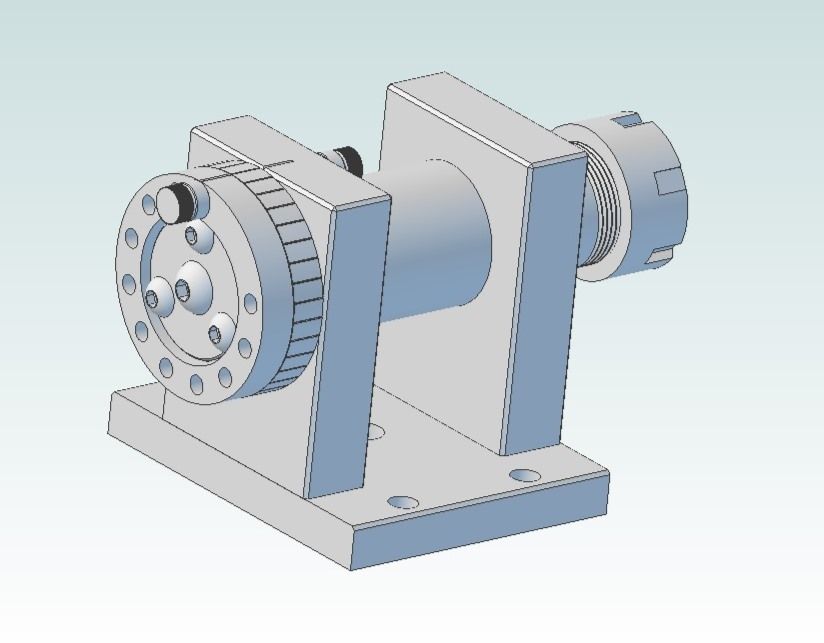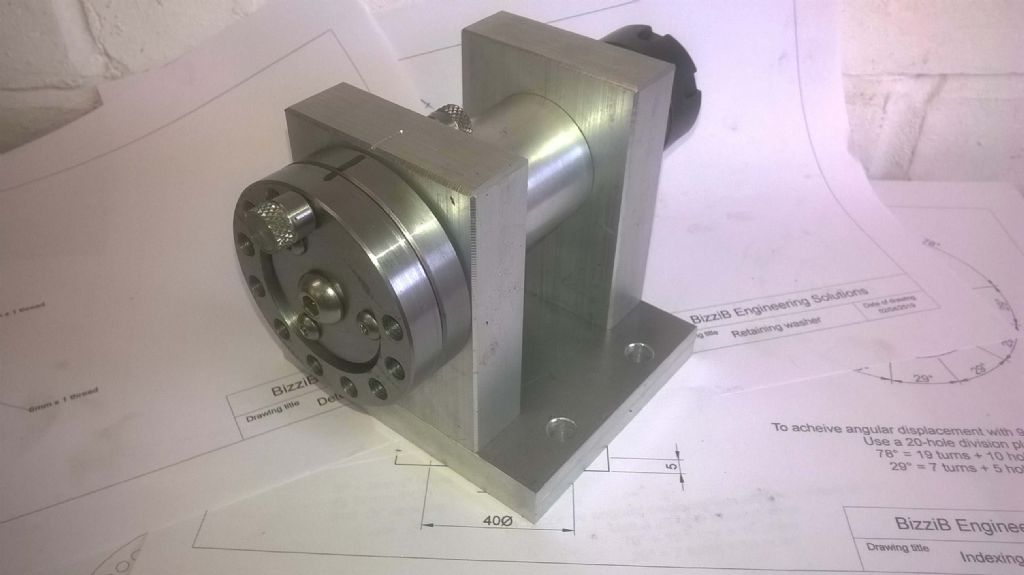
This project started as a way of getting the hang of the Alibre Atom 3D CAD program offered a couple of months ago in MEW. I'd tried a number of 3D packages before and never got to grips with any of them. Somehow and for reasons unknown, I seemed to "click" with this one. Once i got the idea of building up an assembly of parts in my head and put them together in a co-ordinated way, it seemed relatively simple to create the parts in the computer. To start with, I "made" a few simple objects and quickly moved on to more ambitious designs. Then I decided to actually create something that would be useful in the workshop, so I cast around for a tool or fixture that I didn't possess but was on the "nice to have available" list. Thus, this indexer was conceived. I decided that I would limit it to providing division by single degrees and not fractions of a degree. (To be honest, I thought I could do the former, but couldn't think of a way to acheive the latter!)
So, basically, the rotating part was a straight shaft with an ER25 collet chuck on the end – because I had one on a shelf. This had to be supported somehow, so I designed a casting. When I got a quote to produce two castings in aluminium, it was going to be the thick end of £200! Back to the drawing board – or rather the mouse and computer. It made sense to construct the tool in materials which are readily available from most stockists, so that's the way I went.
The collet chuck is mounted on two supports and runs in oilite bearings, the whole being mounted on a base plate.
Opposite the business end of the shaft sit two circular plates, the inner one free to rotate on the shaft, the other, outer one, keyed to it. There are 36 holes at 10° spacing on the inner side of the floating plate (what I called the "reference plate" ) in which a removeable detent engages, through the shaft support. On the other side of this plate are eleven holes, one at 12 o'clock (representing a zero degree position) a second at 79° and subsequent holes at 30° spacing proceeding clockwise.
The outer plate (I call this the "indexing plate" ) has a similar layout of (threaded) holes on the same PCD but at angles of 78° and 29° respectively.
This arrangement allows the holes to be rotated by one degree per pair of holes in much the same way as a vernier scale works. By using a combination of a selection of 10° and 1° divisions, any angle can be obtained.
I foresee its use in a number of workshop applications in addition to the usual ones. For example, in another thread posted this evening, I notice that a member requires assistance making a camshaft. Jason has suggested a method involving milling the profile in a number of stages by rotating the blank a few degrees at a time. Use this and it can be done in one degree increments, if needed.
By substituting a rotating handle, such as used on a cross slide advance screw, and removing the reference plate detent screw, it can be converted into a rudimentary rotating fixture for basic cylindrical grinding,
The possibilities are only limited by one's imagination.
Here is the prototype nearly finished. It's working but needs the graduations engraved and a couple of little tweaks before I'm perfectly satisfied with it. You can compare it with the Alibre output, above.

There are a few more pictures and brief construction details in my album ("A degree of indexing" ) should you want more info.
John
Edited By JasonB on 06/04/2019 06:52:01
 John Hinkley.
John Hinkley.






